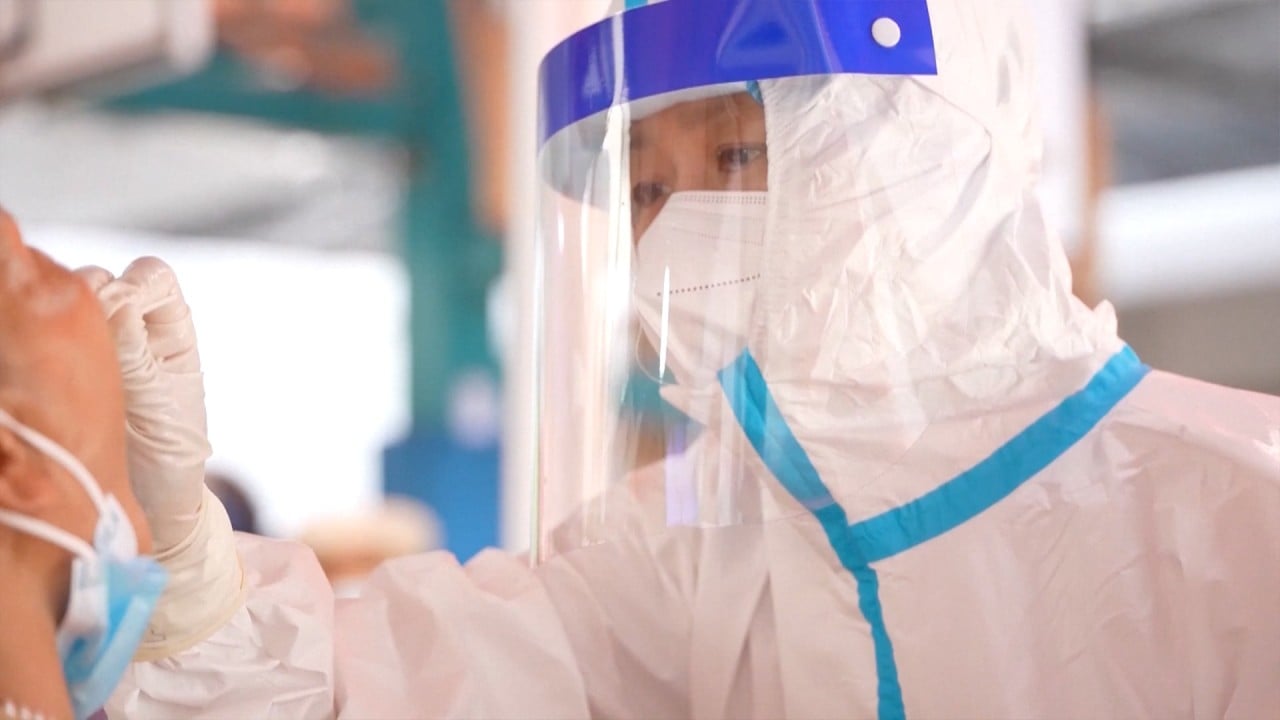
China’s coronavirus success could see Hong Kong-style subsidised medical care in mainland, health expert says
- Professor Li Ling, from Peking University, says China’s successful handling of the pandemic is a good argument for implementation of universal medical care
- Currently, reimbursements from China’s public medical insurance programmes are relatively low and capped, meaning the public must cover most health costs
Mainland China’s success in combating the coronavirus pandemic increases the likelihood that free public health care, similar to Hong Kong, will be provided for the nation’s 1.4 billion-strong population, says a leading expert on the country’s medical care reform.
“China’s success in containing transmission of the virus last year was largely due to the up-to-the-minute free testing and treatment, the result was very good with an affordable price,” said Li Ling, a professor at the National School of Development at Peking University.
“It was similar to Hong Kong’s public health care, which is virtually free to all individuals and works very well.
“China is still a developing country with a large population, but with our national power today, it is possible to provide free medical care.”

01:56
Covid-19 Delta variant cluster spreads in China’s eastern Jiangsu province
About 95 per cent of mainland China’s population is covered by a public medical insurance programme, with most falling under either the urban or urban-rural resident schemes.
The urban scheme is mandatory public insurance funded mainly by employee and employer’s payroll taxes with minimal government funding, while the urban-rural plan is voluntary and mostly subsidised by the government.
However, reimbursements from the public insurance programmes are relatively low – less than 50 per cent in general – and there is a ceiling, meaning the public must cover most of the cost.
“Although the government continues to increase investment in health care, the cost for individuals is increasing much faster than the rate of government investment, so the public still feel that they cannot afford to see a doctor,” said Li, who is also the chief adviser on China’s health care reform for the World Bank.
Mainland China’s total health expenditure accounts for about 7 per cent of gross domestic product (GDP), which is far below the global average of 9.9 per cent, according to Li.
Government health expenditure is also only 2.9 per cent of total health expenditure, which is also much lower than the global average of 5.9 per cent, according to Wang Chen, president of Chinese Academy of Medical Sciences and Peking Union Medical College.
The figures mean, according to Li, mainland China should use Hong Kong’s experience to create a high-level but virtually free health care system, as it is spending more than the city government on health care.
Unlike hospitals in Hong Kong, hospitals in the mainland are still required to make profits
Hong Kong health care is a dual-track system of public and private providers. The public system is nearly free for all, while more expensive private health care is usually provided by employers or paid by individuals independently. In China, only a small number of people have private health care.
Li has been calling for free health care in mainland China for years, but said there are many challenges to change the highly complicated system.
“Unlike hospitals in Hong Kong, hospitals in the mainland are still required to make profits, that’s why excessive medical treatment is prevalent in China and the general public feels it too expensive to go to hospitals,” she said.
Li said that less than 10 per cent of funding for public hospitals in mainland China is from the government, meaning it spends a lot of money on health insurance, and hospitals “make profit” from insurance charges.
“The government should directly give the money to the hospitals, like what Hong Kong has been doing,” she said. “While under strict supervision, free access to free health care can happen.”
Li said free universal health care would actually save the central government money because the profit model hospitals operated under meant a great deal of resources were wasted with over-screening and unnecessary surgeries.
We really need to speed up the medical reform so that the public will not have such worries
To deal with the ageing crisis, authorities have announced plans to gradually raise the retirement age, while also allowing couples to have three children.
Li said the imminent ageing crisis showed it was more urgent than ever to implement health care reform.
“The needs of the elderly in terms of medical care are huge, and the per capita medical costs for people aged over 65 may be three to four times higher than normal,” she said. “Many young Chinese are saving money in case their parents get sick, or they themselves cannot afford the medical bills once they are sick.
“We really need to speed up the medical reform so that the public will not have such worries.”

